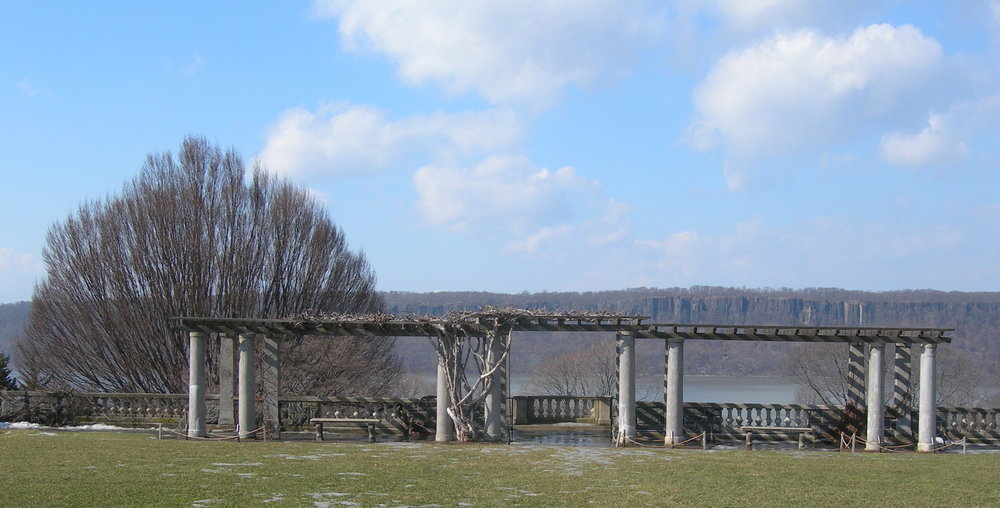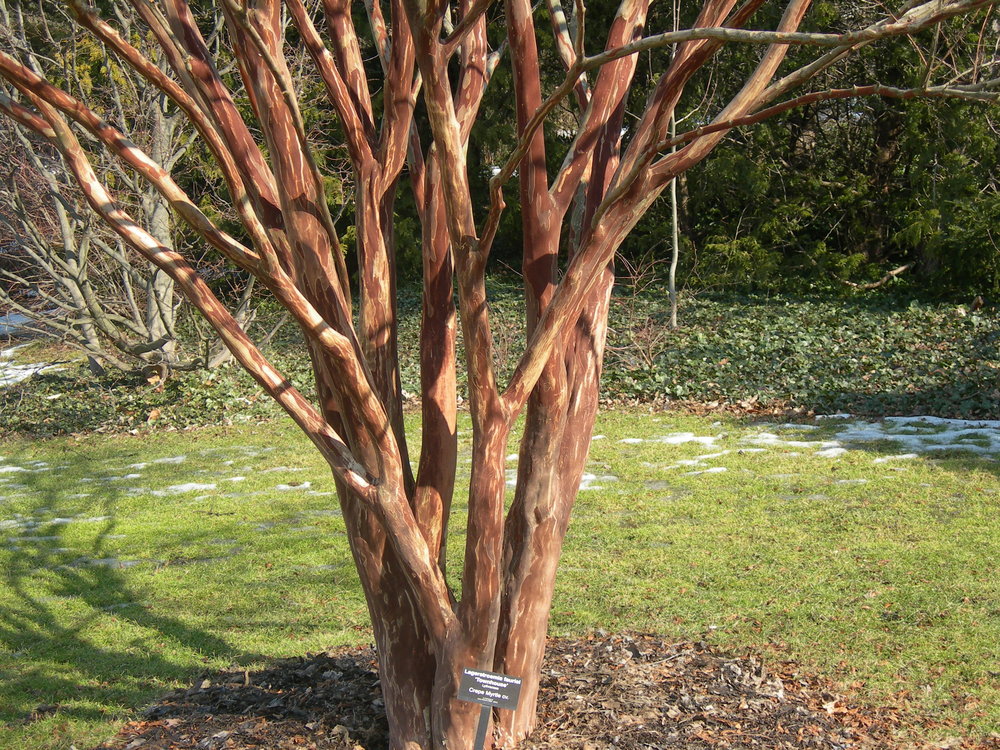Five Principles of Landscape Design That You Can See at Wave Hill and Use in Your Own Garden
Sometimes the process of fine-tuning your garden or landscape can seem a daunting task. One way to make it easier is to use public garden spaces as a resource for seeing landscape design principles put into practice. Wave Hill in Riverdale is a public garden and cultural center which is nearby, fun, beautiful, and a source of inspiration in every season. Originally an estate, the property was donated to the City of New York in 1960, and over several decades the gardens were restored and reinvented by the internationally acclaimed horticulturalist Marco Polo Stufano. Wave Hill “is renowned for its intimacy of scale and its carefully cultivated serendipity: at Wave Hill, even the most seasoned gardeners can take joy in the unexpected.” Wave Hill is one of my favorite gardens, and I’d like to share with you some of the lessons it has taught me.
Design Principle 1: A garden should have “good bones”. The “bones” of a garden include pathways, structures (arbors, trellises, pergolas, gazebos), statues, containers, walls, fences, ponds, fountains and all the different materials they are made from, as well as the trees and shrubs. “Bones” also include the geometry of the space; how the elements relate to each other. Get a map of Wave Hill from the Visitors Center. It’s a simple, almost stylized map. To evaluate the “bones” of your own garden, start by making a similar map of your landscape. Look at how the walkways are situated. Are they curved? Do they lead to any surprises? Where are the planting beds relative to the walkways? Are you invited in? At Wave Hill, you enter from the far end of the parking lot on a narrow path. Directly in front of you in the far distance are the Palisades. In the middle distance is a pergola. Notice that the path does not lead directly to the pergola. Instead, it curves to allow you to slow down and begin to meander through the garden.

The pergola at Wave Hill in winter, with the silhouette of a hornbeam beyond and the Palisades in the far distance.
As you walk through the garden looking at bones, notice how the perennial garden is situated to the side, surrounded by a rustic fence that sets the tone for what’s inside. You need to walk through it to see what’s in it. Each bed is a mini-garden in itself, and a lesson in how you can set up your own small perennial garden without being intimidated. Each bed has its own “bones” – notice how large shrubs, small trees and even garden ornaments provide structure to each bed. This can be best appreciated in winter – find a day to visit when the paths aren’t covered with snow, and notice the strong axial structure of the perennial garden.
Continue through the perennial garden and emerge on a small side path that leads you toward the herb garden. The designer has made use of the old stonewalls and the foundations of the old greenhouses, to plant in and among them. This is much more interesting than if those elements had been removed. The walls provide a backdrop for the plants; a contained and defined area that is clearly designated. Also notice how the planting beds for the herbs have been defined – each bed is essentially the size of one of the bluestones used for the path, creating a strong symmetry, and beds are divided from one another using bluestone set on edge. The herb garden is constructed on the footprints of old greenhouses, with the old walls as a backdrop and bluestone paths giving access to all the planting beds.
Design Principle 2: Strive for four-season interest. Yes, you can have flowers in winter! At Wave Hill if you visit in February and March, you'll see winter jasmine (Jasminum nudiflorum), witch hazel (Hamamelis X intermedia), and cornelian cherry dogwood (Cornus mas) in bloom in late winter. Additional elements with winter interest include red and yellow twig dogwood, pussy willows, black pussy willows, architectural trees (like magnolias, beech, hornbeam), seed heads, exfoliating bark, and berries.

Lagerstromia (Crapemyrtle) bark is fabulous anytime, but especially glowing in the winter sun.
Design Principle 3: Plant a tree! At Wave Hill you will find lots of “specimen” trees, both large and small. A “specimen” tree means that the tree has been planted by itself or in a small grouping so that its attributes can be appreciated. You'll see Lagerstromia (Crape myrtle), Parrotia, Magnolias, Paperbark Maple, English Oak, Dawn Redwood, Elm, Copper Beech, Weeping Beech and Hornbeam. You can have any of these trees in your landscape as well, provided you have the appropriate conditions of wet-dry-sun-shade for the tree you’ve fallen in love with. Notice how the trees at Wave Hill are placed relative to the paths and the beds in places that “make sense” visually – they are connected to their surroundings. Notice that many of them are simply planted with a mulch circle around the base. This is an excellent way to include a specimen tree in your own landscape, without feeling that the tree needs to be under-planted or included with other shrubs in an elaborate island.
Design Principle 4: Add annuals effortlessly to your landscape by using containers. The strategy used by the designers at Wave Hill to add annuals to the garden is to plant a single type of annual in a container and then group containers together. Containers with different shapes and sizes are selected, then arranged to form a tapestry of color, height and texture. When one type of annual gets past its prime, the container is simply removed from the design and a new one is introduced. Using this trick, you can keep your annual displays looking fresh all through the season.
Design Principle 5: Take time for tea. At Wave Hill, outdoor chairs are moveable, plentiful and weatherproof. You can bring a chair under a tree, out into the sun or under the pergola. You can sit by yourself or in a group. Talking, reading, or just sitting is the order of the day. You can sit on the terrace by the Café and be amazed by the majestic view of the Palisades. Sip tea. Munch on a cookie. Have lunch. Invite a friend. Recharge your batteries. Revel in the changes of the seasons. Take this principle to heart for your own garden. Sit in it. Enjoy it. Take a break. Feel the quiet even as you hear all the noises of birds and kids and distant (or maybe not so distant) leaf blowers.
Wave Hill is located 675 West 252nd St., Bronx NY. Call 718-549-3200 or visit www.wavehill.org for more information.